
[ Team LiB ]
Recipe 6.10 Checking for Concurrency Violations
Problem
You need to check for concurrency violations.
Solution
Use a timestamp column to manage data concurrency violations.
The schema of table TBL0610 used in this solution is shown in Table 6-12.
Table 6-12. TBL0610 schema
Column name Data type Length Allow nulls?
Id int 4 No
Field1 nvarchar 50 Yes
rowversion timestamp 8 No
The sample code contains four event handlers and two methods:
Form.Load
Sets up the sample by creating two DataTable objects: A and B. For each, a
DataAdapter is created and a handler is attached to handle the RowUpdated event.
The DataAdapter is used to fill the DataTable with both schema and data from
table TBL0610 in the database. The update command is defined for the
DataAdapter using the timestamp column in the WHERE clause to catch
concurrency errors. The first row from both tables is displayed on the form
simulating the view of two different simultaneous data users.
DataAdapter.RowUpdated
Checks if the row was inserted or updated. For those rows, the current value of the
timestamp column is retrieved from the TBL0610 in the database and used to
update the row in the DataTable.
Update( )
This method copies the specified value for Field1 from the text box into the

DataTable. The DataAdapter is used to update DataTable changes to table
TBL0610 in the database. If a DBConcurrencyException is encountered, the
change to the row is rejected.
DisplayRow( )
This method is used to display data from a specified row in DataTable A or B to
the corresponding user display on the form.
Update Button.Click
Calls the Update( ) method to update changes made to the row in either DataTable
A or B. The DisplayRow( ) method is called to update the corresponding row
displayed on the form.
Refresh Button.Click
Gets the latest values for the row in DataTable A or B from table TBL0610 in the
database. The DisplayRow( ) method is called to update the corresponding row
displayed on the form.
The C# code is shown in Example 6-28.
Example 6-28. File: RowversionForm.cs
// Namespaces, variables, and constants
using System;
using System.Configuration;
using System.Windows.Forms;
using System.Text;
using System.Data;
using System.Data.SqlClient;
private DataTable dtA, dtB;
private SqlDataAdapter daA, daB;
private const String TABLENAME = "TBL0610";
// . . .
private void RowversionForm_Load(object sender, System.EventArgs e)
{

// Build statements to select only the row for ID = 1
// and to update the data for the DataAdapter.
String selectText = "SELECT Id, Field1, rowversion FROM " +
TABLENAME + " WHERE Id = 1";
String updateText = "UPDATE " + TABLENAME + " " +
"SET Field1 = @Field1 " +
"WHERE Id = 1 AND rowversion = @rowversion";
// Create table A and fill it with the schema.
dtA = new DataTable("A");
daA = new SqlDataAdapter(selectText,
ConfigurationSettings.AppSettings["Sql_ConnectString"]);
daA.RowUpdated += new SqlRowUpdatedEventHandler(da_RowUpdated);
daA.FillSchema(dtA, SchemaType.Source);
dtA.Columns["rowversion"].ReadOnly = false;
daA.Fill(dtA);
// Create the update command and define the parameters.
daA.UpdateCommand = new SqlCommand(updateText,
daA.SelectCommand.Connection);
daA.UpdateCommand.CommandType = CommandType.Text;
daA.UpdateCommand.Parameters.Add("@Id", SqlDbType.Int, 0, "Id");
daA.UpdateCommand.Parameters["@Id"].SourceVersion =
DataRowVersion.Original;
daA.UpdateCommand.Parameters.Add("@Field1", SqlDbType.NVarChar, 50,
"Field1");
daA.UpdateCommand.Parameters["@Field1"].SourceVersion =
DataRowVersion.Current;
daA.UpdateCommand.Parameters.Add("@rowversion", SqlDbType.Timestamp, 0,
"rowversion");
daA.UpdateCommand.Parameters["@rowversion"].SourceVersion =
DataRowVersion.Original;
// Create table B and fill it with the schema.
dtB = new DataTable("B");
daB = new SqlDataAdapter(selectText,
ConfigurationSettings.AppSettings["Sql_ConnectString"]);
daB.RowUpdated += new SqlRowUpdatedEventHandler(da_RowUpdated);
daB.FillSchema(dtB, SchemaType.Source);
dtB.Columns["rowversion"].ReadOnly = false;
daB.Fill(dtB);
// Create the update command and define the parameters.

daB.UpdateCommand = new SqlCommand(updateText,
daB.SelectCommand.Connection);
daB.UpdateCommand.CommandType = CommandType.Text;
daB.UpdateCommand.Parameters.Add("@Id", SqlDbType.Int, 0, "Id");
daB.UpdateCommand.Parameters["@Id"].SourceVersion =
DataRowVersion.Original;
daB.UpdateCommand.Parameters.Add("@Field1", SqlDbType.NVarChar, 50,
"Field1");
daB.UpdateCommand.Parameters["@Field1"].SourceVersion =
DataRowVersion.Current;
daB.UpdateCommand.Parameters.Add("@rowversion", SqlDbType.Timestamp, 0,
"rowversion");
daB.UpdateCommand.Parameters["@rowversion"].SourceVersion =
DataRowVersion.Original;
// Display the first row (ID=1) from both tables on the form.
DisplayRow(dtA, 0);
DisplayRow(dtB, 0);
}
private void da_RowUpdated(object sender, SqlRowUpdatedEventArgs e)
{
// Check if an insert or update operation is being performed.
if(e.Status == UpdateStatus.Continue &&
(e.StatementType == StatementType.Insert ||
e.StatementType == StatementType.Update))
{
// Build a command object to retrieve the updated timestamp.
String sqlGetRowVersion = "SELECT rowversion FROM " +
TABLENAME + " WHERE Id = " + e.Row["Id"];
SqlConnection conn = new SqlConnection(
ConfigurationSettings.AppSettings["Sql_ConnectString"]);
SqlCommand cmd = new SqlCommand(sqlGetRowVersion, conn);
// Set the timestamp to the new value in the data source and
// call accept changes.
conn.Open( );
e.Row["rowversion"] = (Byte[])cmd.ExecuteScalar( );
conn.Close( );
e.Row.AcceptChanges( );
}
}

private void Update(SqlDataAdapter da, DataTable dt, TextBox field1TextBox)
{
// Move the value for the field named Field1
// from the form to the DataTable for updating.
dt.Rows[0]["Field1"] = field1TextBox.Text;
// Update the row table.
try
{
da.Update(dt);
}
catch (DBConcurrencyException ex)
{
// Error if timestamp does not match
MessageBox.Show(ex.Message);
dt.RejectChanges( );
}
}
private void DisplayRow(DataTable dt, int index)
{
if (dt.TableName == "A")
{
aIdTextBox.Text = dt.Rows[index]["Id"].ToString( );
aField1TextBox.Text = dt.Rows[index]["Field1"].ToString( );
aRowversionTextBox.Text = Convert.ToBase64String(
(Byte[])dt.Rows[index]["rowversion"]);
}
else
{
bIdTextBox.Text = dt.Rows[index]["Id"].ToString( );
bField1TextBox.Text = dt.Rows[index]["Field1"].ToString( );
bRowversionTextBox.Text = Convert.ToBase64String(
(Byte[])dt.Rows[index]["rowversion"]);
}
}
private void updateButton_Click(object sender, System.EventArgs e)
{
if(((Button)sender).Tag.ToString( ) == "A")
{
Update(daA, dtA, aField1TextBox);
DisplayRow(dtA, 0);



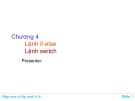
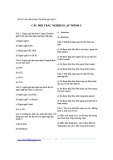

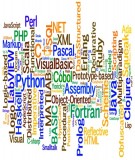
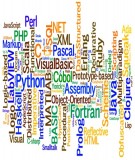












![Đề thi cuối kì Nhập môn Mạng máy tính: Tổng hợp [Năm]](https://cdn.tailieu.vn/images/document/thumbnail/2025/20251110/nminhthoi53@gmail.com/135x160/38281762757217.jpg)


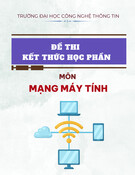
![Đề thi học kì 2 môn Nhập môn Mạng máy tính [kèm đáp án]](https://cdn.tailieu.vn/images/document/thumbnail/2025/20251014/lakim0906/135x160/23811760416180.jpg)

